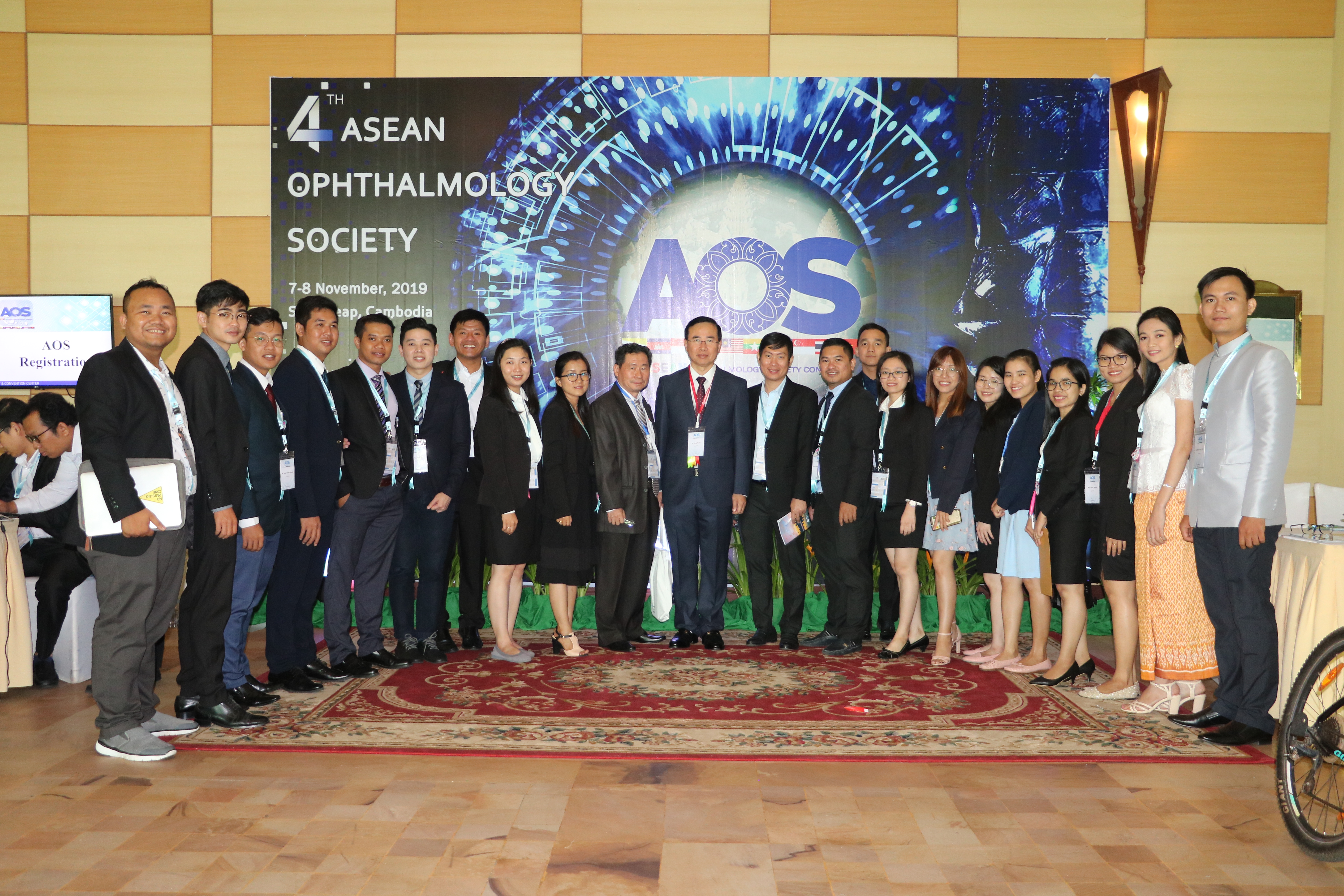Patient Education
The Cambodian Ophthalmological Society (COS) works towards providing quality eye care as well as providing eye health education to the general public. Here you will find information on common eye conditions and general information you will find useful in taking care of your eyes.
- Pteryguim
- Diabetic Retinopathy
- Refractive Errors
- Cataract
- Glaucoma
- Childhood Blindness
- Stevens Johnson Syndrome
- What are the Risks Associated with Cataract Surgery?
Do not let Glaucoma rob your vision
What is glaucoma?
Glaucoma is a group of eye disease in which the pressure of fluid within the eye gradually increase to a level not tolerated by the sensitive tissue of the eye. The optic nerve, which carries visual images to the brain, is susceptible to damage from glaucoma. Such damage is irreparable, resulting in permanent loss of vision and complete blindness. Rarely, a weakly structure optic nerve or poor blood circulation in the back of the eye can also cause glaucoma-like damage to the optic nerve, even if eye pressures are normal.
What causes glaucoma?
There is a fluid filled chamber in front of the eye called the anterior chamber. In is filled with aqueous humour, which bathes and nourishes the tissue of the eye. For reasons yet unknown, if the drainage of this fluid out of the eye is restricted, pressure builds up within the eye.
Unless this pressure is controlled by appropriate treatment, it causes irreversible damage to the optic nerve and other parts of the eye and causes a permanent loss of vision.
Who is likely to get glaucoma?
Glaucoma is one of the leading causes of blindness in blindness in India. Based on various population sample studies, about 3 percent of the general populations have some from of glaucoma.
- Older individual over the age of 40 are more likely to have glaucoma, but people of all age group including newborn infants may have glaucoma.
- Individual with myopia, diabetes, systemic hypertension and family history of glaucoma have an increased risk.
What are the symptoms of glaucoma?
Most types of glaucoma can cause significant visual loss without any symptoms. Until advanced, vision stays normal and there is no pain redness of the eye. Hence, a periodical eye check-up of all individuals is desirable to exclude the possibility of glaucoma. How ever, if glaucoma progresses without adequate treatment, the following symptoms may occur in some individual.
- Pain around the eyes when coming out from darkness (e.g. as soon as the person comes out of theatre)
- Coloured halo rings seen around bulbs, especially during mornings and night
- Frequent change of reading glasses, headaches, pain and redness of the eyes
- Reduced vision in dim illumination and during nights
- Gradual decrease of side vision with progression of glaucoma
- Blurring of vision
How is glaucoma detected?
A simple test with a device called the tonometer measures pressure with in the eye. This is performed after applying local anaesthetic eye drops that numb the eye. It does not cause pain or irritation. This is test alone cannot detect all glaucoma. The back of the eye should be inspected to view the optic nerve after dilating the pupils. Side vision may also be examined by a computer-associated, simple test called perimetry (visual field examination).
How is glaucoma treated?
Glaucoma cannot be cured. The loss of vision that already exists cannot be recovered. Hoe ever, appropriate treatment and regular follow-up on preserve residual vision from further damage.
Earlier the diagnosis better is the chances of arresting the progression of glaucoma.
Medicines: Several drugs are available to reduce fluid formation within the eye or promote their drainage from the eye. For most people with glaucoma, regular use of medications will control the increase fluid pressure. How ever, in some, drug may stop working after a period of time.
In these situations, the ophthalmologist cam help by adding or changing medication or by choosing another type of treatment: laser or surgical methods. Periodical eye examinations are therefore essential to ensure that the medication are working.
Laser Treatment:
In some type of glaucoma, called angle closure glaucoma, laser treatment is used to reduce eye pressure. This is a simple out-patient procedure, which uses a strong beam of light to relieve the fluid pressure.
In open angle type glaucoma, laser treatment is applied only if various medications fail to control the fluid pressure. Medications need to be continued regularly even after laser treatment. Laser treatment has very minimal complications, but is effect in reducing the eye pressure may wear off over time.
Surgery:
In some persons with glaucoma, medical or treatment is insufficient to arrest glaucoma and surgery is indicated. But this treatment option has its risks and limitations and is reserved as treatment of last resort. Even after surgical treatment, individuals with glaucoma should continue periodical check-up by an ophthalmologist, or ensure adequate control of eye pressures.
Remember:
- Glaucoma cannot be cured, only controlled.
- Vision lost due to glaucoma cannot be recovered.
- Glaucoma is not an infectious disease, but maybe heredity. So if any one in the family has glaucoma, it is advisable that the rest of the family have their eyes examined.
- Early detection and treatment of glaucoma, before it causes major visual loss. Is the ideal way to control the disease.
- Drugs prescribed should be regularly used at specified time, to ensure a round-the-clock pressure control. Medications may cause few complications at times, but they should not be stopped without the advice of the ophthalmologist.
- Once diagnosed, the patient should be committed for lifelong treatment and periodical eye check-ups.
December 8, 2023











